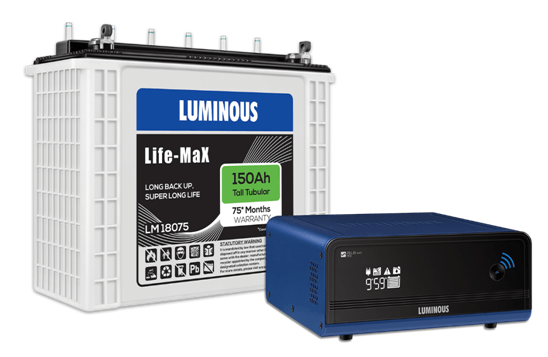Come summers and power cuts become a common thing across India. With the mercury level reaching new heights each passing day, it is nothing but impossible to beat the heat without adequate power backup.
One starts feeling hot if the fan goes off even for a few seconds. The outburst of the weather is so hard that finding a power backup solution that keeps the summer heat at bay becomes inevitable.

Inverters are nothing but a blessing for areas that face power cuts throughout the day. With several brands offering inverters that come packed with plethora of features, choosing the right one is certainly a task.
While all brands boast about the superior features, to make a sound decision, you must get into small details. So, if you are looking to buy the best inverter for home or planning to replace the old one, keep a few things in mind.
1] Understand Your Power Requirement
The power requirement is different for everyone. So, the first step is to recognize your power requirement. It is a simple process of identifying the appliances that will connect to the inverter in case of power failure. It will be an addition of the power consumed by the electrical equipment that will run through an inverter.
For example, you want to connect 1 television, 1 CFL, 3 fans, and 3 tube lights to the inverter. Calculate the power consumed by these items and choose an inverter that offers the best performance according to your needs.
| 3 Fan | 70 watts |
| 3Tube Lights | 60 watts |
| 1 CFL | 25 watts |
| 1 television | 120 watts |
(3*70 +3*60 + 25 + 120) = 535 watts will be the total power requirement for your home when the power goes off.
2] VA Rating
VA stands for Volt Ampere rating – the current and voltage supplied by the inverter to the connected items. The power supplied by the inverter and the power requirement of the items remain the same if the inverter operates with 100% efficiency.
However, all appliances have a power loss commonly in the form of heat and is referred by a term knows as Power Factor.
Let’s consider the power factor as 0.65.
Power requirement/Power factor = VA rating
535/0.65 = 823 VA
An inverter with VA 823 and above will work best according to your requirements.
3] The Battery
Yes, the battery. It serves as the backbone of the inverter and is the deciding factor of its performance. The backup hours are decided by the capacity of the battery that is expressed in Ampere-hours (Ah).
Let’s consider that you need a power backup of 3 hours with all connected items running. Now assume battery voltage as 12V and battery efficiency as 0.8.
Power Requirement*Back-Up Time*Battery Efficiency/Battery Voltage
(535*3*0.8)/12=107Ah
An inverter with 107Ah battery or more will be the best for your needs.
4] Sine Wave or Square Wave Inverter?
The cost of an inverter depends on the capacity, features of the inverter, and the technology it runs on. When it comes to inverter technology, there are two types – sine wave and square wave. For the sake of longevity and safety of the items running on the inverter, experts recommend buying a sine wave inverter.
It reduces the humming noise from appliances such as fans. If you need to run sensitive items such as refrigerators and laptops, sine wave technology will be the right option for you.
Time to Make an Informed Decision!
Now that you know the drill of choosing the best inverter for home, do your research and bring home one that eases out the outburst of the season. Many reputed brands like Luminous offer a wide range of home inverters.
Choose the best inverter for home that comes packed with a Li-Ion battery, has no open wires, let’s you stay connected with Wi-Fi, has 3x faster battery charging, offers a superior backup time, and is equipped with a safety mechanism against surge and short circuits.






